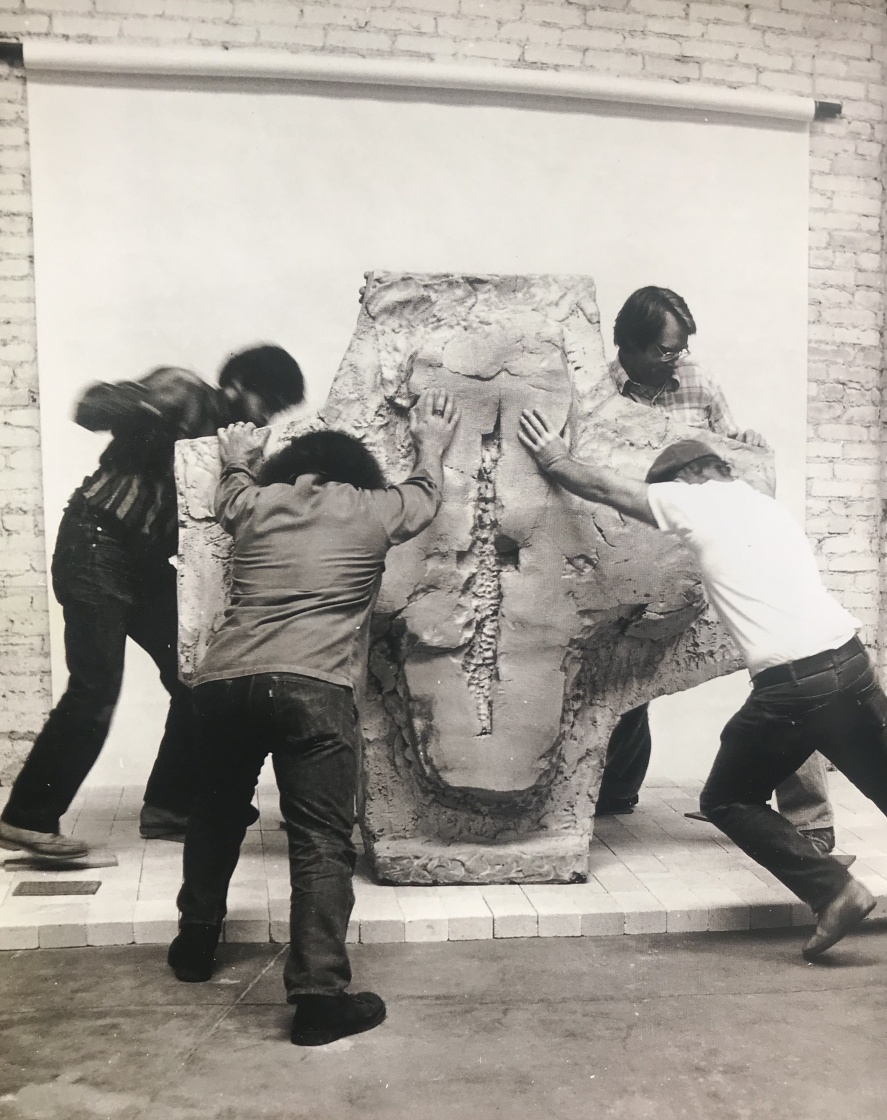In Memory of John Mason

Image: John Mason preparing his work White Cross (1964) for a photo shoot, 1964. Left to right: Corwin Clairmont, Jerry Avesian, Gordon Thorpe, John Mason. 1964 © John Mason
Ceramic sculpture artist and perennial educator John Mason passed away on Sunday January 20th, 2019. A legendary figure in the history of California’s Abstract Expressionist movement, Mason began exhibiting in West Hollywood’s Ferus Gallery on La Cienega Boulevard in 1957 showing large-scale ceramic sculpture. He continued to produce and teach until his death at 91 with his final show at Scripps College in 2018. For over 60 years his work has been celebrated and exhibited internationally but his influence finds its origins where his career began, in Los Angeles.
In 1949 John moved to Los Angeles from Nevada to study art at what was then the Los Angeles County Art Institute and Chouinard (now OTIS and CalArts, respectively). Between these two schools he studied first under Susan Peterson and later Peter Voulkos, who would become a lifelong mentor and friend. In 1957 the two built out a studio space on Glendale Boulevard in Silverlake. Though raw, the former woodshop had plenty of electricity and an owner that didn’t seem to mind what they did with it, a rare combination desirable to any LA artist before or since. They purchased a gas fueled industrial kiln large enough for a few grown men to stand up and walk around in and began constructing works on a scale previously unrealizable. That same year he mounted his first solo exhibition of the monumental spear forms he would later become known for.
The scale of these works affirmed the potential of the medium while the purposeful inclusion of cracks, folds, creases defiantly exposed evidence of its making. In person his sculptures are massive, and his geometric shapes are elemental, atavistic, and they boldly slice through space and block out interiors. Though monolithic, the clay preserves the emotionality of the gestures. He chose surfaces that are haptic and capture uniquely human decisions as evidenced by the presence of the hand in the work.
Mason’s hulking clay monoliths, cruciforms, and architectural-scale wall works contributed to the emerging embrace of the medium as a platform for artistic pursuit in the early-1960s. Prior to this time the material had been relegated by those writing about it as craft, decorative, or the stuff of sketch. However, John and his Los Angeles contemporaries generated a conversation around clay and its new found (albeit provisional) legitimacy as a high art medium. The work they collectively generated was instrumental in placing ceramic sculpture into the Modern Art cannon.
John Mason influenced countless artists through his teaching at UC Berkley, UC Irvine, Pomona College, Hunter College, and in recent years at UCLA and USC.
An icon of American Modernist sculpture his work is widely collected and can be viewed in the permanent collections of LACMA, MoCA, The Norton Simon Museum of Art, and SFMoMA.